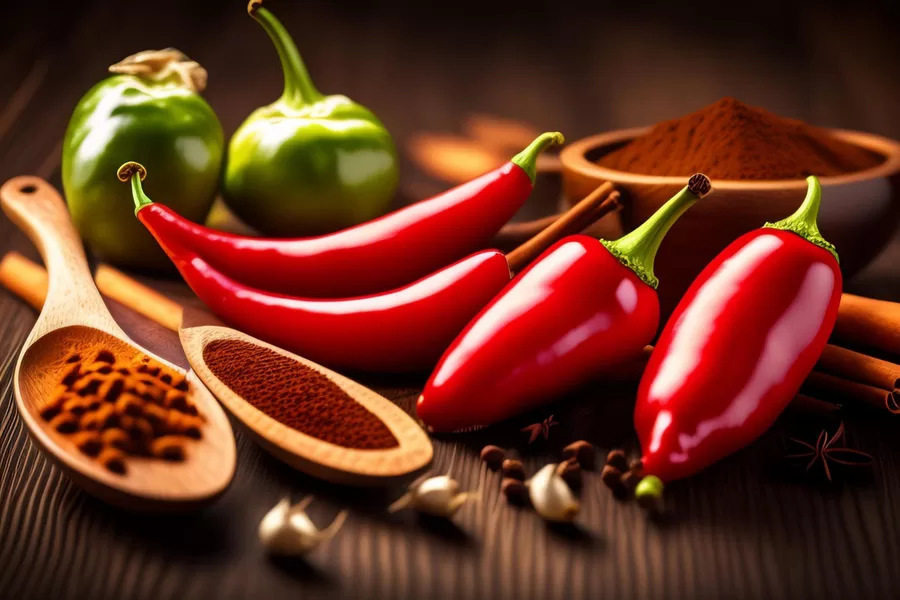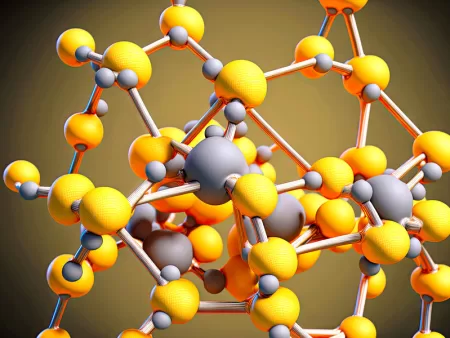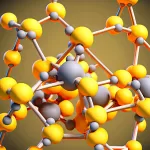
Imagine unlocking a secret ingredient capable of transforming your wellness and weight management journey, all hidden within the humble chili pepper. This isn’t just about adding a kick to your meals; it’s about tapping into a vibrant source of vitality and well-being.
Capsaicin, the essence of chili’s heat, emerges as a champion in the realms of pain relief, inflammation reduction, and metabolic boost. But the question looms: How can one integrate this powerful element into everyday life for maximum benefit without the fiery backlash?
Exploring Capsaicin: The Spicy Marvel
Capsaicin stands as a remarkable natural compound, offering a zesty flavor to various cuisines while boasting an array of health advantages. This spicy element, nestled within the heart of chili peppers, ranges in intensity from a gentle tingle to a blistering heat, depending on the pepper variety. It is a member of the capsaicinoids family, which are the architects behind the spice levels in peppers.
The Science Behind the Heat
The scientific community has shown a burgeoning interest in capsaicin, thanks to its potential in managing pain, diminishing inflammation, and its promising role in weight control. Its interaction with pain receptors in the body enables capsaicin to act as a natural analgesic, making it a common ingredient in creams aimed at relieving muscular and joint discomfort.
Capsaicin and Inflammation
Beyond its pain-relieving capabilities, capsaicin is celebrated for its anti-inflammatory effects. Chronic inflammation is a precursor to a plethora of health problems, including but not limited to cardiovascular diseases and diabetes. Capsaicin’s ability to alleviate inflammation underscores its contribution to holistic health and the prevention of such chronic conditions.
Aiding Weight Loss Naturally
One of the most captivating research areas for capsaicin lies in its capacity to assist in weight management. Its metabolic-boosting, appetite-suppressing, and fat-burning properties highlight capsaicin as a natural ally in the journey towards achieving a healthy weight. This suggests a spicy yet effective approach to tackling weight loss hurdles.
Versatility in Consumption
The presence of capsaicin across various chili peppers, from the mild to the intensely hot, allows for a broad incorporation into diets, catering to all levels of spice tolerance. From sprinkling chili powder to integrating fresh peppers into meals, the opportunities to benefit from capsaicin’s health properties are vast.
The ongoing exploration into capsaicin’s full spectrum of health benefits reveals a compound of significant interest. With its unique blend of taste-enhancing properties, pain-relief, anti-inflammatory benefits, and potential in supporting weight loss efforts, capsaicin presents itself as more than just a source of heat—it’s a gateway to a healthier lifestyle. Embracing the spice not only enriches your culinary experience but also taps into an array of health benefits worth considering.
Unlocking Weight Loss with Capsaicin
Emerging studies spotlight the relationship between capsaicin, the dynamic component in chili peppers, and weight management. This intriguing compound is not just about adding zest to our meals but also plays a pivotal role in fostering a leaner physique.
Mechanism 1: Metabolic Acceleration
At the heart of capsaicin’s weight loss benefits is its capacity to kick-start the body’s heat generation. This action, known as thermogenesis, significantly ramps up the metabolic rate, leading to an uptick in calorie expenditure. Essentially, capsaicin acts like a metabolic booster, facilitating quicker and more efficient weight loss by turning up the body’s internal thermostat, thereby burning calories at a faster pace.
Mechanism 2: Hunger Management
One of the key challenges in weight management is controlling appetite. Capsaicin emerges as a natural appetite suppressant, subtly reducing the urge to eat. It is believed to lower the levels of ghrelin, the hormone responsible for signaling hunger to the brain. By keeping hunger at bay, capsaicin aids in minimizing caloric intake, making it a useful ally in the battle against binge eating and snack cravings.
Mechanism 3: Fat Utilization Enhancement
Capsaicin shines in its ability to promote fat oxidation, a critical factor in weight loss. This process transforms fat into a primary energy source, streamlining the reduction of fat deposits. The shift towards using fat for energy not only contributes to weight loss but also bolsters stamina and energy levels during physical activity. For those aiming to enhance their physical performance or simply improve their metabolic health, incorporating capsaicin could offer significant benefits.
Capsaicin’s multi-faceted approach to weight loss—through metabolic acceleration, hunger management, and fat utilization—presents a compelling case for its inclusion in a weight management strategy. Whether through dietary adjustments to include more chili peppers or considering capsaicin supplements, this potent compound can be a valuable part of a health-conscious lifestyle. Always remember, moderation is key, and consulting with a healthcare provider before making any significant changes to your diet or health regimen is crucial.
How to Integrate Capsaicin into Your Meals
Introducing capsaicin into your diet is a straightforward way to not only spice up your culinary life but also to tap into its weight loss and health benefits. However, the fiery nature of capsaicin might pose a challenge for those sensitive to spice.
Starting Off Gently
Embarking on your capsaicin journey doesn’t mean you have to dive straight into the deep end with the hottest peppers on the market. Instead, start with milder varieties of chili peppers, such as bell peppers or banana peppers, which contain less capsaicin and offer a gentler introduction to spice. Gradually, as your tolerance increases, you can experiment with moderately spicy peppers like jalapeños, moving on to more fiery options like habaneros or ghost peppers if desired. This gradual approach allows your palate and digestive system to adjust over time.
Considering Capsaicin Supplements
If the idea of eating spicy foods doesn’t appeal to you, capsaicin supplements are a viable alternative. Available in capsule form, these supplements can provide a concentrated dose of capsaicin without the need to eat chili peppers. However, it’s essential to approach supplements with caution. Always adhere to the recommended dosage on the product label and seek advice from a healthcare professional before adding them to your regimen. This ensures that the supplement complements your health goals safely and effectively.
Exploring Diverse Cuisines
Capsaicin’s versatility shines in its ability to blend seamlessly into a variety of dishes across different cuisines. From the smoky flavors of Mexican salsas to the vibrant heat of Thai curries, capsaicin can enhance meals in multiple forms—fresh, dried, or powdered. Begin by adding a small amount of chili pepper to one meal a day, whether it’s sprinkling some chili flakes over your morning eggs or adding fresh diced peppers to your evening stir-fry. As you become more accustomed to the heat, you can start to explore and experiment with spicier dishes, discovering new flavors and dishes that incorporate capsaicin in exciting ways.
Tips for Cooking with Capsaicin
When cooking with capsaicin, especially in the form of fresh chili peppers, there are a few tips to keep in mind. Always wear gloves when handling hot peppers to avoid skin irritation, and be mindful not to touch your face or eyes. If you’re trying a new pepper, taste a very small amount first to gauge its heat level. Additionally, pairing spicy dishes with dairy products, such as yogurt or milk, can help mitigate the heat intensity, making your culinary experiments more enjoyable.
Safety and Side Effect
The vibrant heat component found in chili peppers, known for spicing up culinary delights, also carries a plethora of health advantages, from aiding in shedding pounds to mitigating discomfort. Nonetheless, leveraging these benefits necessitates an informed approach towards its consumption and application, prioritizing well-being and minimizing adverse reactions.
- Digestive Harmony and Spice Intake: Introducing this fiery extract into one’s diet excessively might prompt discomfort within the gastrointestinal tract. Symptoms can vary from slight unease, such as acid reflux or stomach upset, to more severe responses like nausea or diarrhea, due to its irritant nature on the stomach’s lining. A phased incorporation of this ingredient allows the digestive system to adapt, fostering a smoother integration into your diet.
- Prudent Application on Skin: When using this extract in ointments or patches for alleviating discomfort, careful application is paramount to sidestep irritation. It’s vital to avoid direct contact with open wounds or delicate areas to prevent a harsh burning sensation. Employing protective gloves during its application and ensuring it does not come into contact with sensitive regions are prudent steps. Should accidental exposure occur, the discomfort, though temporary, can be intense.
- Avoiding Inhalation Discomfort: The process of cooking with or otherwise handling spicy ingredients can release particles into the air, potentially leading to respiratory irritation. This can manifest as coughing, sneezing, or in more serious cases, difficulty in breathing, especially for those with pre-existing respiratory ailments. Keeping areas well-ventilated when working with these ingredients helps in reducing the likelihood of respiratory issues.
- Alertness to Allergic Indicators: On rare occasions, individuals may exhibit allergic reactions to this spicy component, presenting through skin irritation, swelling, or respiratory distress. It is imperative to seek professional medical advice promptly upon noticing any such symptoms, to receive the necessary care and interventions.
- Interplay with Medications: This piquant extract can potentially alter the effect of certain medications, notably those involved in blood coagulation, such as anticoagulants, heightening the risk of bleeding. Prior to integrating high doses or concentrated forms into your regimen, a consultation with a healthcare provider is crucial to ensure there are no adverse interactions with ongoing medication treatments.
Embracing the zest of chili peppers into your lifestyle involves a balanced approach, keen on reaping the extract’s rewards while diligently avoiding its pitfalls. Starting slowly, exercising caution with dermal applications, and staying informed about individual health situations and medication dynamics are key. Engaging with a medical professional ensures that the incorporation of this potent element into your routine is both safe and aligned with your wellness goals, allowing for an enriching experience with minimal risk.
Conclusion
This fiery substance from peppers is key to alleviating discomfort, quelling inflammation, and facilitating slimming endeavors. By activating the body’s heat production, it acts as a catalyst for enhanced metabolic activity, aiding in the pursuit of a leaner physique. Variety in consumption methods, from culinary integration to alternative supplement forms, accommodates every palate’s spice threshold. Adopting a phased approach, initiating with milder flavors and progressively embracing more intense heat, ensures a gentle acclimatization process. Seeking advice from healthcare practitioners is prudent before altering your diet or introducing potent spice extracts for health optimization.
FAQs
It primarily aids in pain relief, inflammation reduction, and weight management by boosting metabolic rate and promoting a leaner body composition.
It stimulates the body’s heat production, a process that increases metabolic activity, thereby enhancing calorie burning and supporting weight loss efforts.
Yes, you can enjoy its benefits by directly adding it to your meals, starting with milder peppers, or opting for supplement forms if you’re sensitive to spicy foods.
Begin with less spicy varieties and gradually increase the intensity. This phased approach helps your body adjust to the spice levels comfortably.
Yes, consulting with healthcare professionals is recommended, especially if you plan to make significant changes to your diet or use supplements for health benefits.







